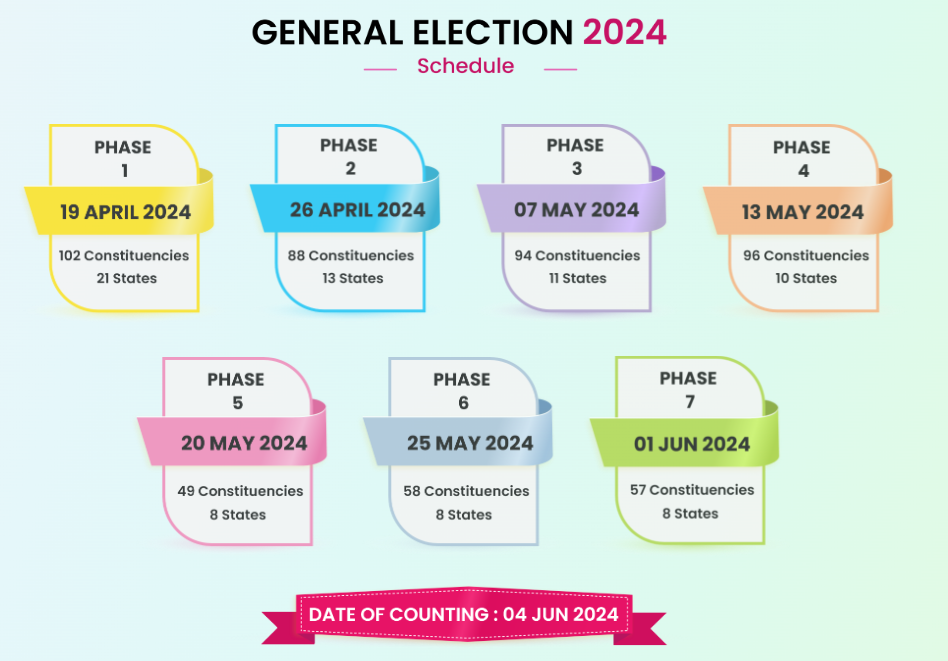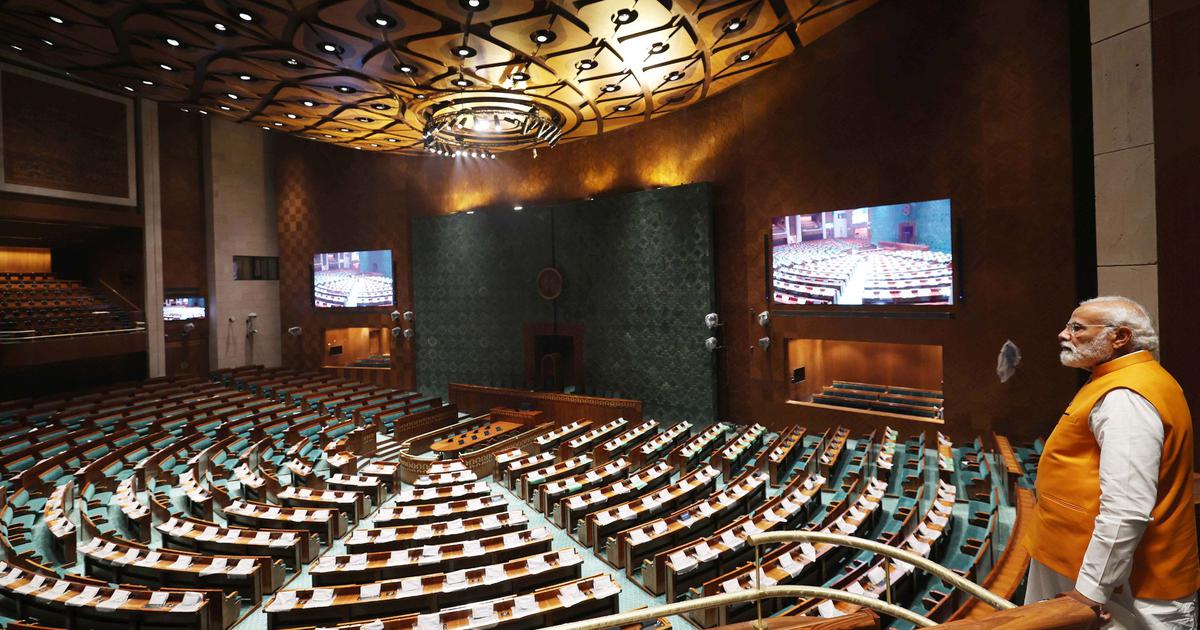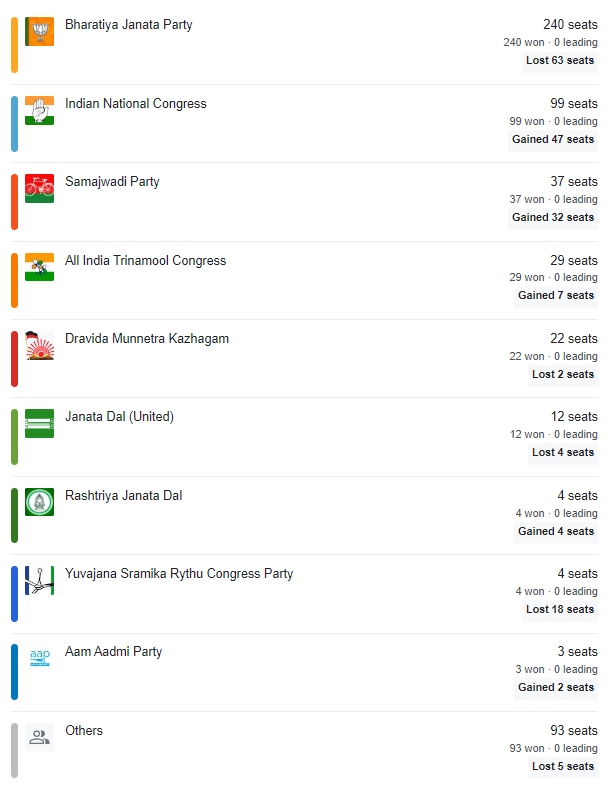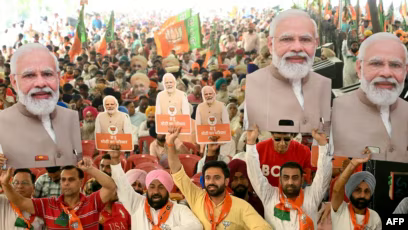If you thought Singapore’s elections were full of interesting twists, turns and subplots, wait till you see India’s elections.
With a total population of over 1.4 billion people, deciding who will govern your country can be tricky.
Sounds complicated? Don’t worry.
Here’s all you need to know about India’s 2024 general elections.
How Elections Work in India
Elections work differently across territories.
So, first, let’s start with how elections work in India or Bharat or whatever name they’re going by now.
There are a few different types of elections in India, namely:
- President of India
- Vice President of India
- Members of the Parliament in Rajya Sabha (Upper House) and Lok Sabha (Lower House)
- Members of State Legislative Councils
- Members of State Legislative Assemblies
- Members of local governance bodies such as Municipal bodies and Panchayats
- By-elections when seat-holders of a particular constituent dies, resigns or is disqualified
For this specific election, the Indian population headed to the polls to elect all 543 members of the Lok Sabha.

Candidates who win seats in the Lok Sabha elections are called “Members of Parliament” and will hold their positions for five years or until they are called to dissolve parliament.
The Lok Sabha focuses on the creation, removal and improvement of laws that affect citizens throughout the country.
Because of how expansive and large India is, these elections are split into multiple staggered phases.

Moving across the country, having these phases allows for an adequate security presence in each area that is voting.
Breaking Down the 2024 Indian General Election
More than 968 million people were eligible to vote during these elections, which is around 70% of their total population.
Imagine having to count those votes.
Of these 968 million, around 642 million participated in the elections, of which 312 million were women.
This marked the highest-ever participation by female voters in India.
By the way, it’s not compulsory to vote in India, but it’s compulsory here in Singapore. Watch this video and you’d understand:
This was the largest election in history, surpassing the previous one in 2019 and lasted a total of 44 days.
Like many other nations like Singapore, India has a multi-party system – except unlike Singapore, they have six national parties, 57 state parties and 2,764 unrecognised parties.
The two main parties that you can pay attention to are the Bharatiya Janata Party (BJP) and the Indian National Congress which dominate politics at a national level.
The BJP has been the governing party with Prime Minister Narendra Modi at the helm since 2014.

Interestingly enough, the BJP itself doesn’t function on its own but instead leads an alliance called the National Democratic Alliance (NDA), which currently includes 21 other recognised parties.
So now that we’re all caught up – what were the results of the elections?
The NDA secured a majority of 283 seats, of which 240 were won by the BJP which means Prime Minister Modi is set for his third term in power.
The Indian National Congress won 99 seats, gaining 47 seats since the previous election.
The other seats were spread out between the remaining parties as such:

What this Means for India
While PM Modi won another term, these results were shocking to many as the BJP did not win the single-party majority that Modi has attained since his first term.
His campaign itself boasted an ambitious slogan – “Ab ki baar, 400 paar”, which stated that his party was targeting more than 400 seats with the NDA.
Modi and his party have clearly fallen short of that goal, losing 63 seats since the previous election.
The BJP also lost the stronghold of Uttar Pradesh, which is India’s most populous state and holds a significant 80 parliamentary seats.
Compared to their wins in 2014 and 2019, where they won 71 and 62 seats respectively, the BJP only secured 33 seats in these elections, while its NDA allies secured three.
These results are more appalling because while many global incumbent leaders are unpopular, PM Modi is an extremely popular figure in India and one who has people following him passionately.

This almost “cultish” following has been built on PM Modi’s appeal of being a charismatic and robust speaker.
Even with this surprising result, PM Modi pledged to make good on his campaign promises, which included turning India’s economy into the world’s third largest, stating that the country will see a new chapter of big decisions.
Women are also seen to be more inclined towards supporting Modi during this election.
The reason behind this could be Modi’s welfare schemes which have been focused on women, including cash handouts, free cooking gas, piped water and sanitation.
However, many also criticise his Hindu-first politics for creating intolerance for non-Hindus all while the economic inequality gap grows larger in the country – two big topics of discussion during these elections.
There was even a multi-party opposition alliance called I.N.D.I.A, that was formed last year with the hopes of unseating PM Modi.
The opposition came for PM Modi over his Hindu nationalist policies and relied heavily on social issues such as unemployment, inflation and inequality during their campaigns.
According to a report published by Oxfam in 2017, the richest 10% in India controls 80% of the entire nation’s wealth.
These numbers are jarring for PM Modi’s government and it is clear from all of these that faith in them is wavering.
I guess we will have to see how this progresses over the next five years of his third term.
Common Practices for India’s Elections
I’m not going to lie, before writing this, I had little to no knowledge of the Indian political landscape – and I’m someone who is already a little bit of a geek when it comes to global politics.
But India is currently the world’s fifth largest economy and a huge nation, so they do hold a relatively large sway on how other nations are impacted around the world.
It might be important to keep more up-to-date on their happenings just like these elections.
Aside from all the politics, there are also some interesting practices that India enacts when it comes to their elections.
For one, the sale of liquor is banned on vote counting and results day of the Lok Sabha elections.
Sale of fireworks and firecrackers is also banned.
I guess they need to find other ways to celebrate or lament the results of the elections.
Section 144 also comes into play during vote counting, which prohibits a gathering of five or more people in a particular radius near counting centres.
These regulations might seem strange to us but in light of several incidents of violence during the first two phases of this year’s elections, it is probably necessary.
This year is a year of elections globally, with many countries like the U.S., Indonesia and Germany having their elections conducted this year.
Needless to say, it’ll be an interesting year for our global political landscape for sure.




